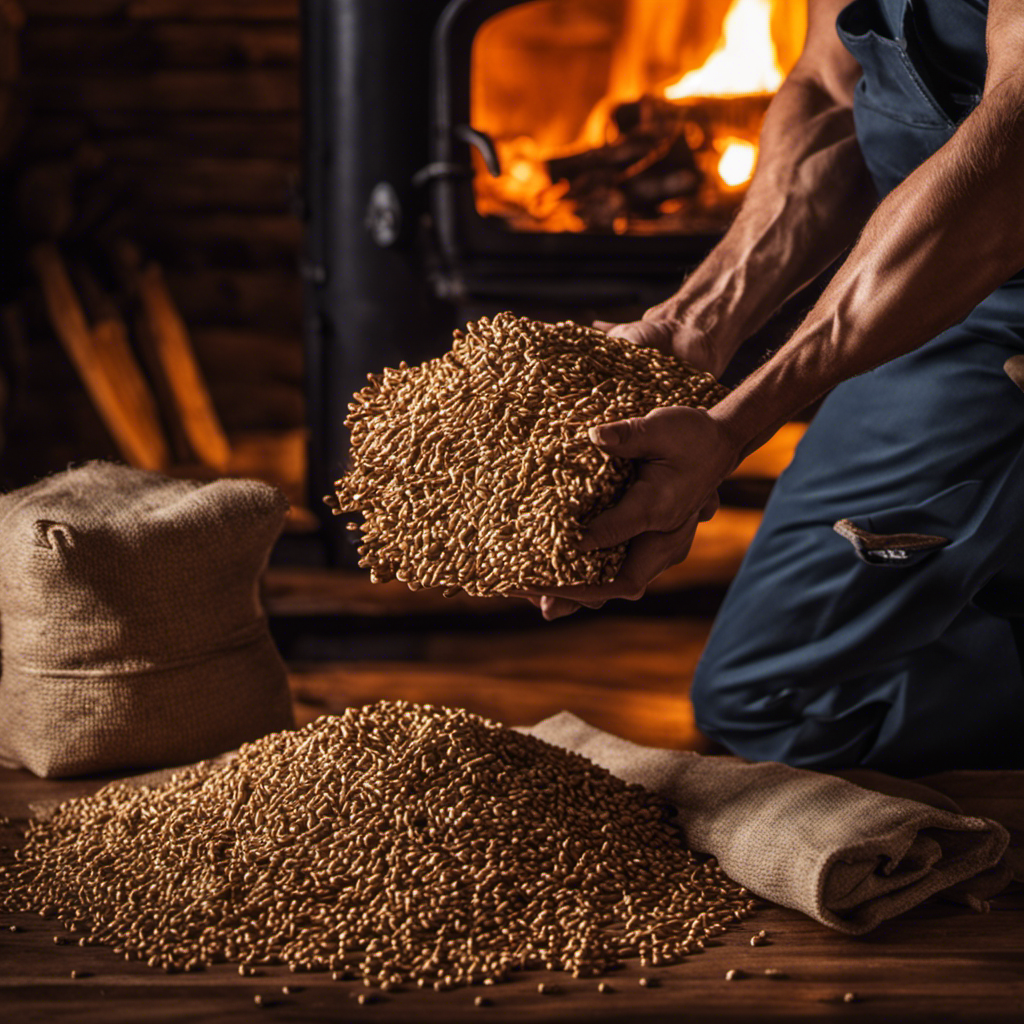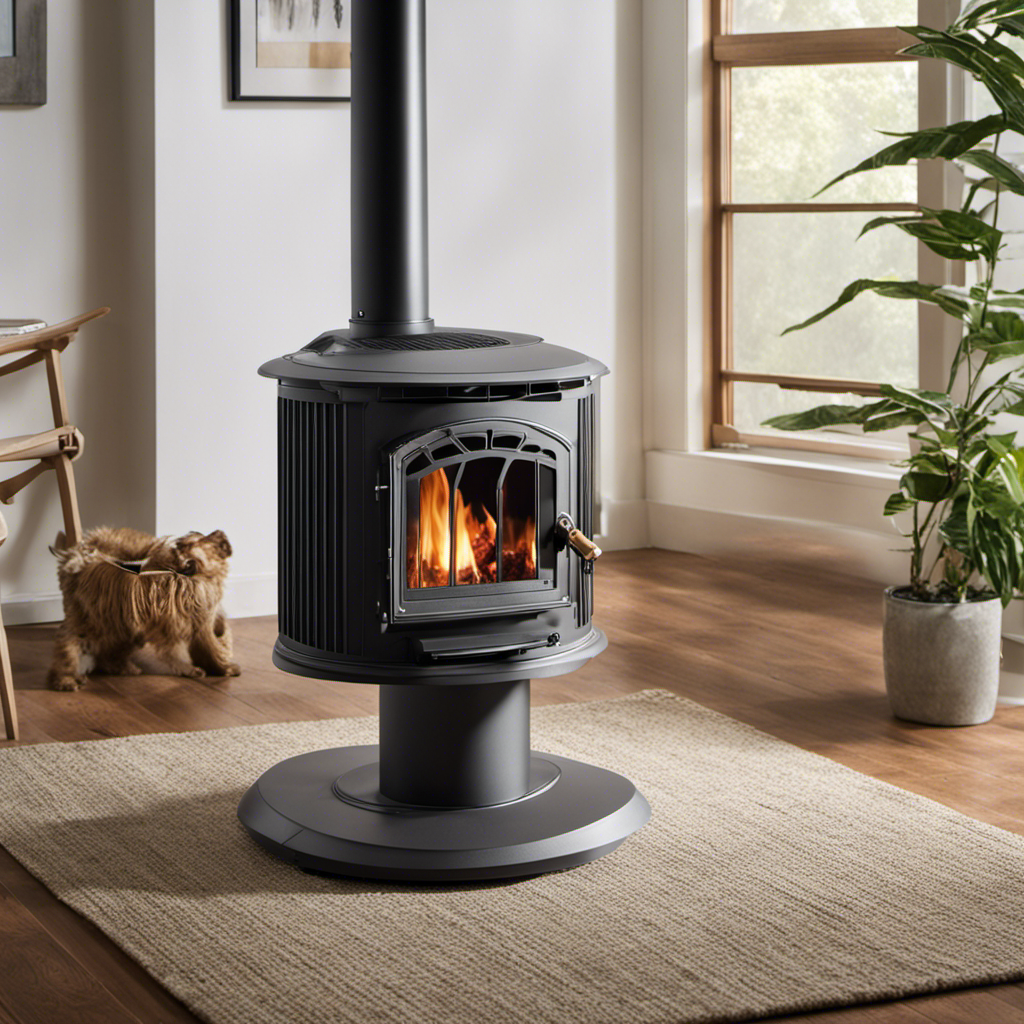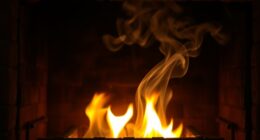As I tend to the fire in the heart of my wood stove, I am mesmerized by the intense heat it produces. The crackling flames dance energetically, casting a golden glow that envelops my home in a cozy embrace.
But just how hot can a wood stove get? In this article, we will delve into the factors that affect wood stove temperature, the importance of combustion efficiency, the right wood for maximum heat output, and maintaining a safe temperature range.
Join me on this journey of understanding the power of a blazing wood stove.
Key Takeaways
- Proper insulation and finding the right balance between insulation and airflow are crucial for maintaining consistent heat output in a wood stove.
- Oxygen levels play a significant role in combustion efficiency, with optimal levels resulting in complete combustion and higher energy efficiency.
- Choosing the right wood, such as seasoned wood with around 20% moisture content and dense hardwoods, can maximize heat output.
- Maintaining a safe temperature range and proper ventilation are essential for preventing overheating, potential fire hazards, and ensuring the safe expulsion of harmful gases from the house.
Factors Affecting Wood Stove Temperature
I can control the temperature of my wood stove by adjusting the air intake and damper settings.
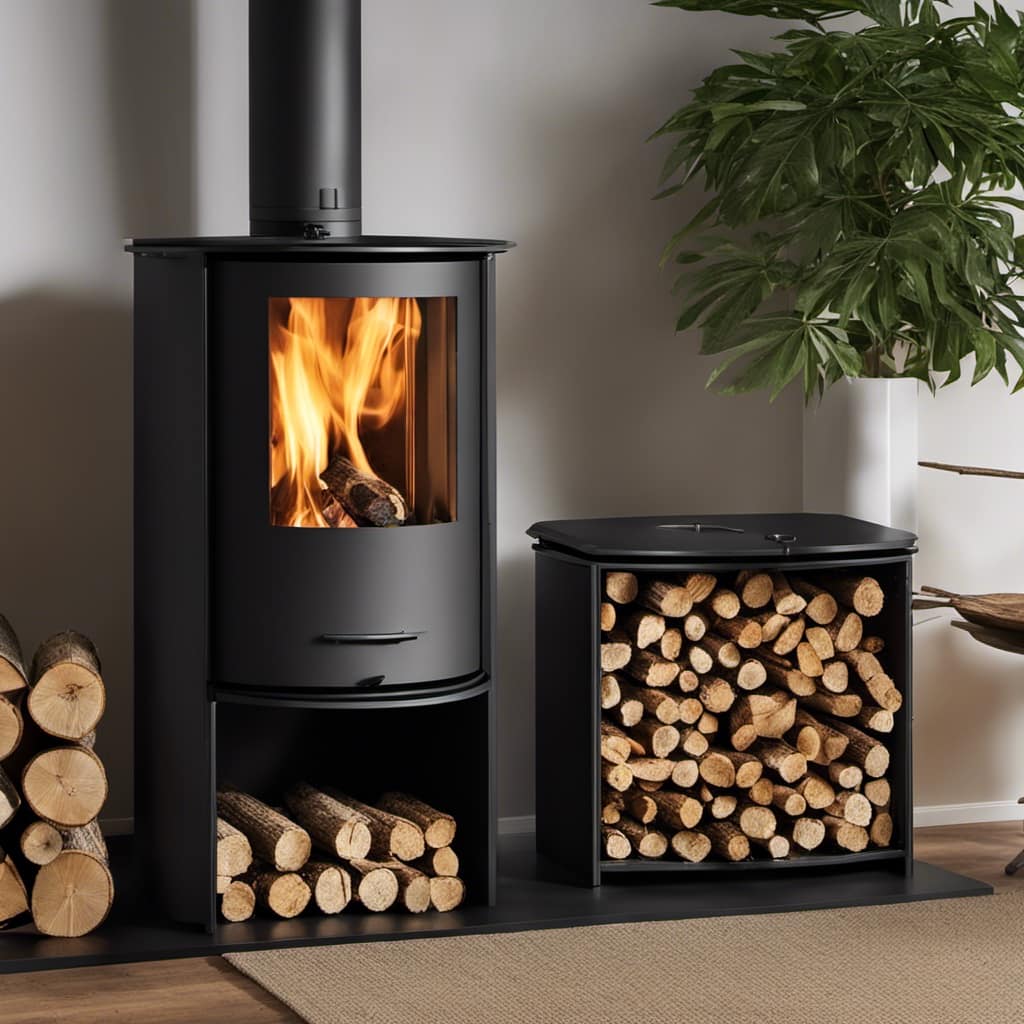
One important factor that affects the temperature of a wood stove is the insulation. Proper insulation is essential for maintaining a consistent heat output. Insufficient insulation can result in heat loss, causing the stove to burn less efficiently and produce lower temperatures. On the other hand, excessive insulation can lead to overheating, which can damage the stove and pose a safety risk.
Another crucial factor is controlling the air flow. By adjusting the air intake and damper settings, I can regulate the amount of oxygen that reaches the fire. More oxygen means a hotter fire, while less oxygen results in a lower temperature.
Finding the right balance between insulation and air flow is key to achieving optimal wood stove temperatures.
Understanding Combustion Efficiency in Wood Stoves
One key factor in understanding combustion efficiency in wood stoves is the correlation between oxygen levels and temperature. The combustion process in wood stoves is highly dependent on the availability of oxygen. When the oxygen supply is limited, incomplete combustion occurs, leading to lower energy efficiency and the production of harmful byproducts. Conversely, when the oxygen levels are optimal, complete combustion takes place, resulting in higher energy efficiency and cleaner emissions.
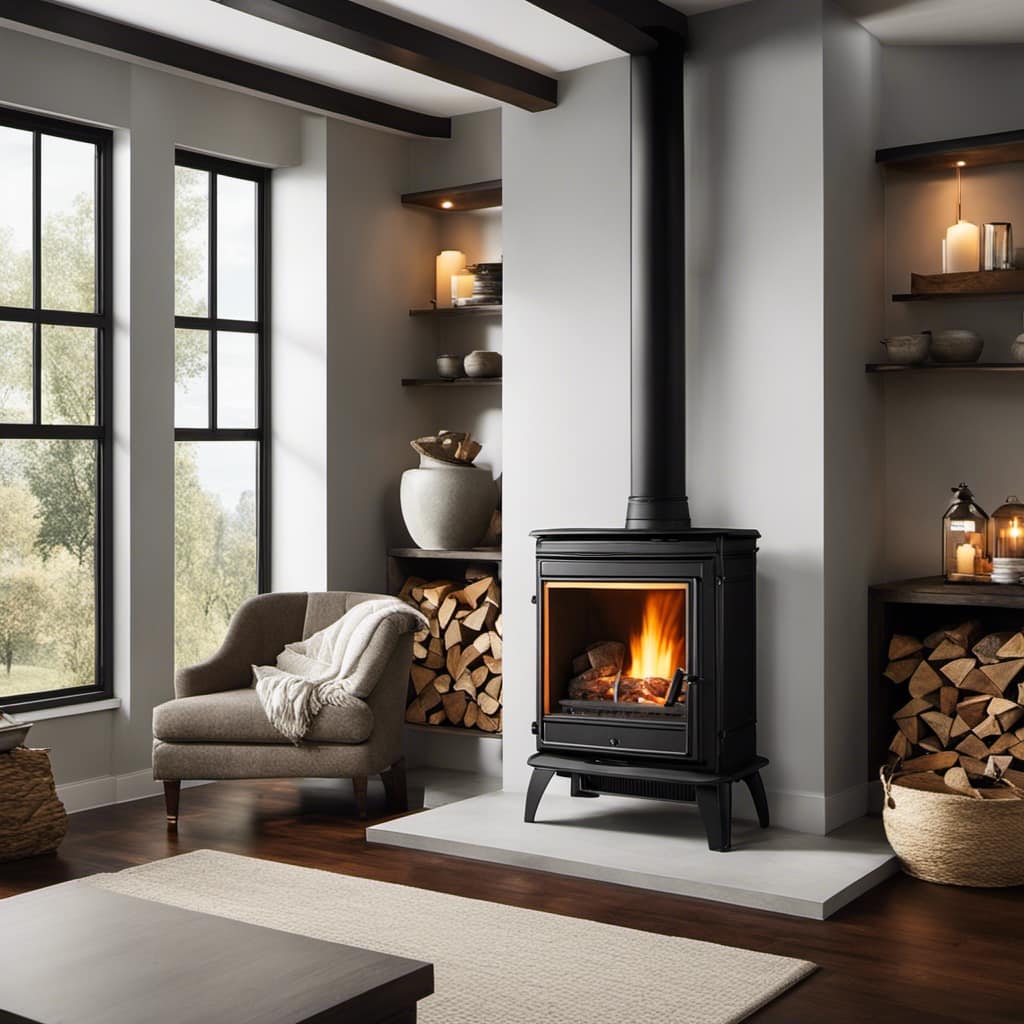
To illustrate this correlation, consider the following scenarios:
High Oxygen Levels:
The stove is well-ventilated, allowing for ample oxygen supply.
The fire burns at a high temperature, leading to efficient combustion.
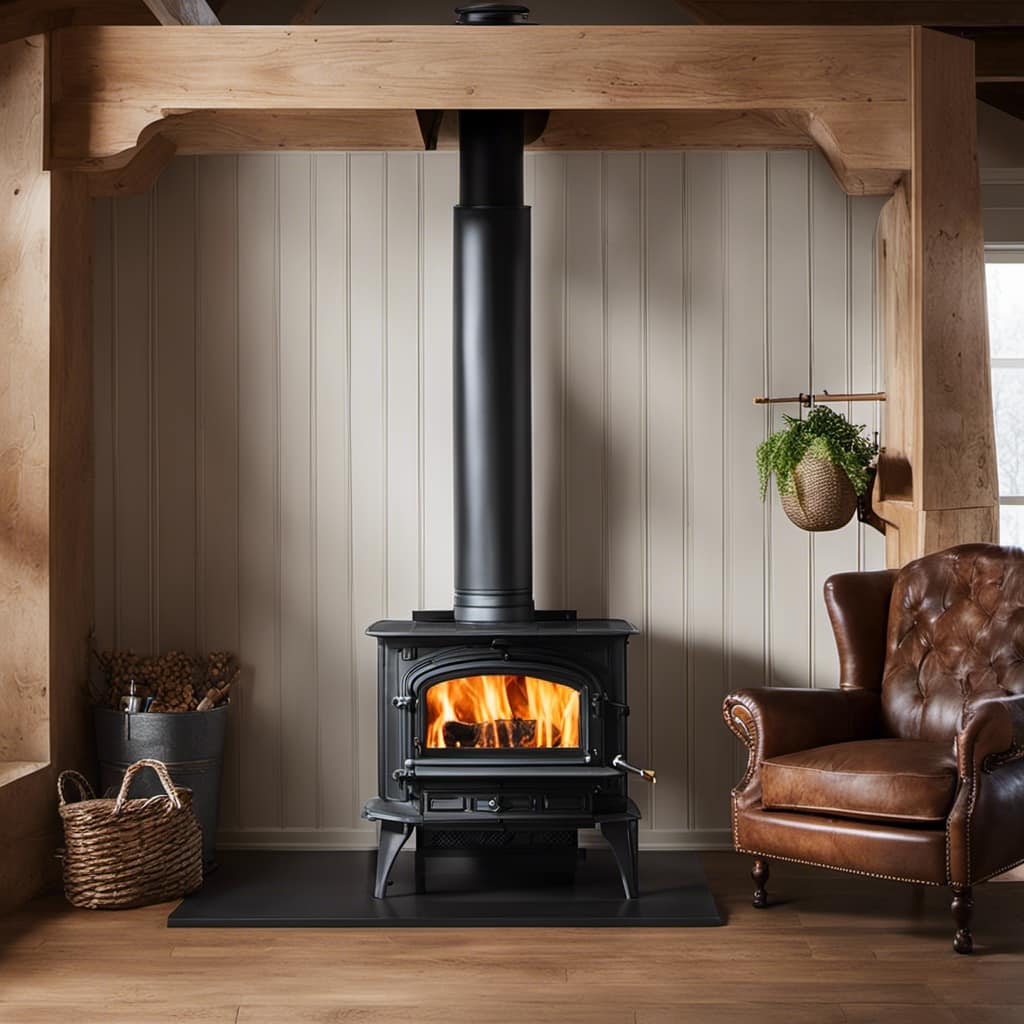
More heat is produced, resulting in greater energy efficiency.
Low Oxygen Levels:
The stove is poorly ventilated, restricting oxygen supply.
The fire burns at a lower temperature, causing incomplete combustion.
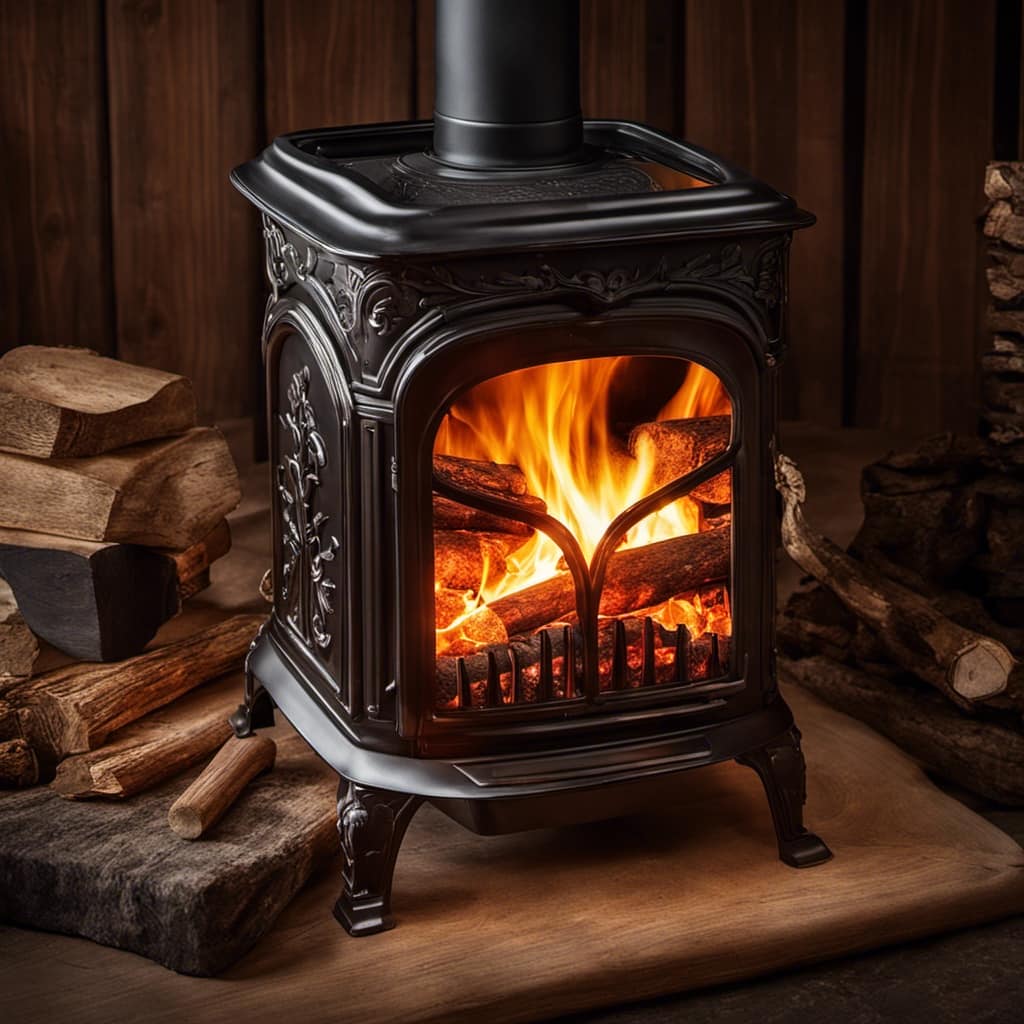
Less heat is generated, leading to lower energy efficiency.
Understanding the relationship between oxygen levels and temperature is crucial for optimizing combustion efficiency and improving energy efficiency in wood stoves.
Choosing the Right Wood for Maximum Heat Output
To achieve maximum heat output, it’s important to choose the right wood and ensure proper ventilation in your wood stove.
One key factor to consider is the wood moisture content. Wood with high moisture content, such as freshly cut or green wood, won’t burn efficiently and will produce less heat. It’s recommended to use seasoned wood with a moisture content of around 20%. Seasoned wood has been dried for at least six months, allowing it to burn more efficiently and generate more heat.
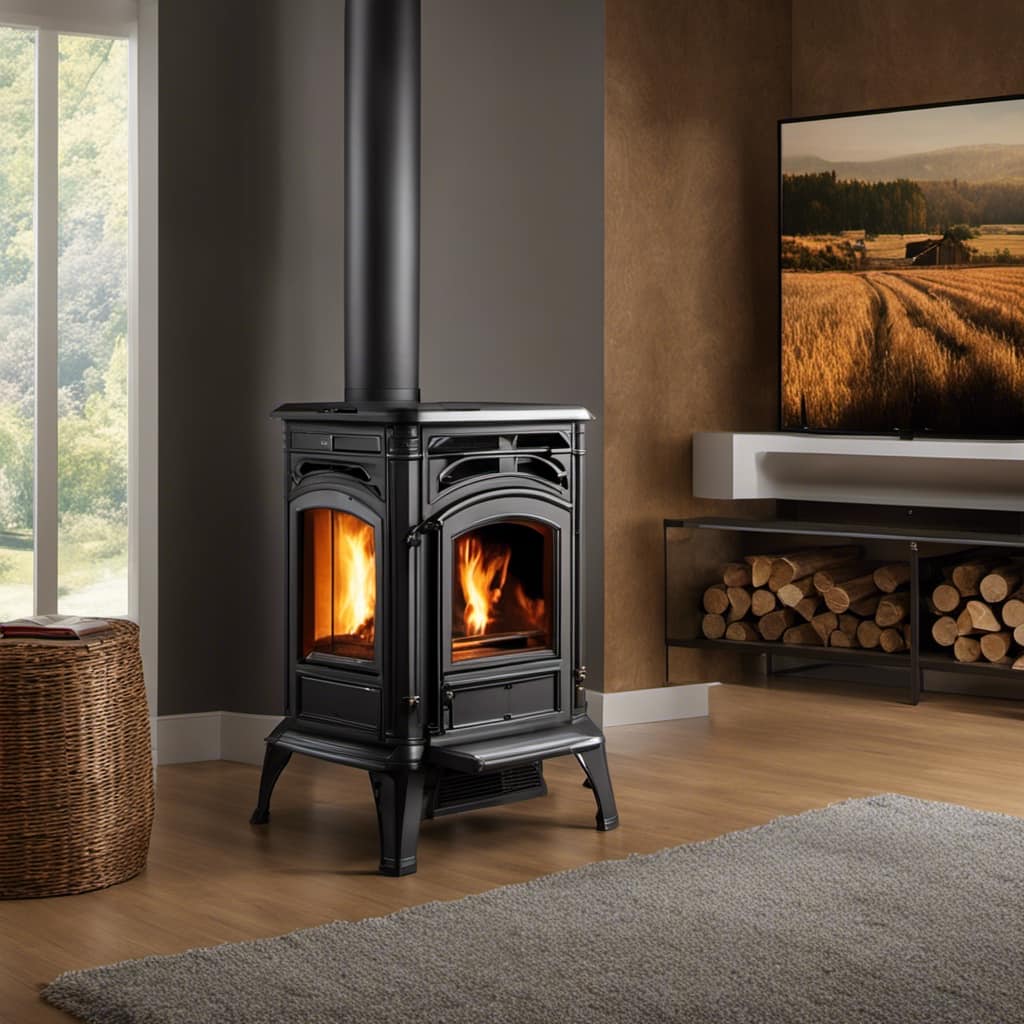
Additionally, the type of hardwood used can also affect heat output. Dense hardwoods like oak, hickory, and maple have a higher energy content and burn longer, producing more heat.
Maintaining a Safe Temperature Range in Wood Stoves
Wood stoves can reach extremely high temperatures, so it’s crucial to regularly monitor and control the heat to ensure a safe temperature range. Proper wood stove maintenance plays a vital role in preventing overheating and potential fire hazards.
Here are some key points to consider:
- Use a reliable thermometer to monitor the stove’s temperature accurately.
- Keep a safe distance between the stove and any combustible material.
- Clean the stove regularly to prevent the accumulation of creosote, which can ignite and cause a chimney fire.
- Ensure that the stove’s air vents aren’t blocked to allow proper airflow and prevent overheating.
By following these maintenance practices, you can effectively prevent your wood stove from overheating.

However, it’s equally important to consider the importance of proper ventilation in wood stove heating.
Importance of Proper Ventilation in Wood Stove Heating
I understand the importance of proper ventilation in wood stove heating because it ensures that harmful gases are safely expelled from the house. Ventilation requirements for wood stove safety are crucial in maintaining a healthy and safe environment.
When wood is burned, it releases various gases, such as carbon monoxide, nitrogen dioxide, and volatile organic compounds. These gases can be detrimental to our health if not properly ventilated.
To ensure the safety of wood stove heating, proper airflow management is essential. This involves having an adequate air supply for combustion and effectively removing the byproducts of combustion. It’s recommended to have a dedicated air intake for the wood stove, allowing for a controlled and efficient combustion process.
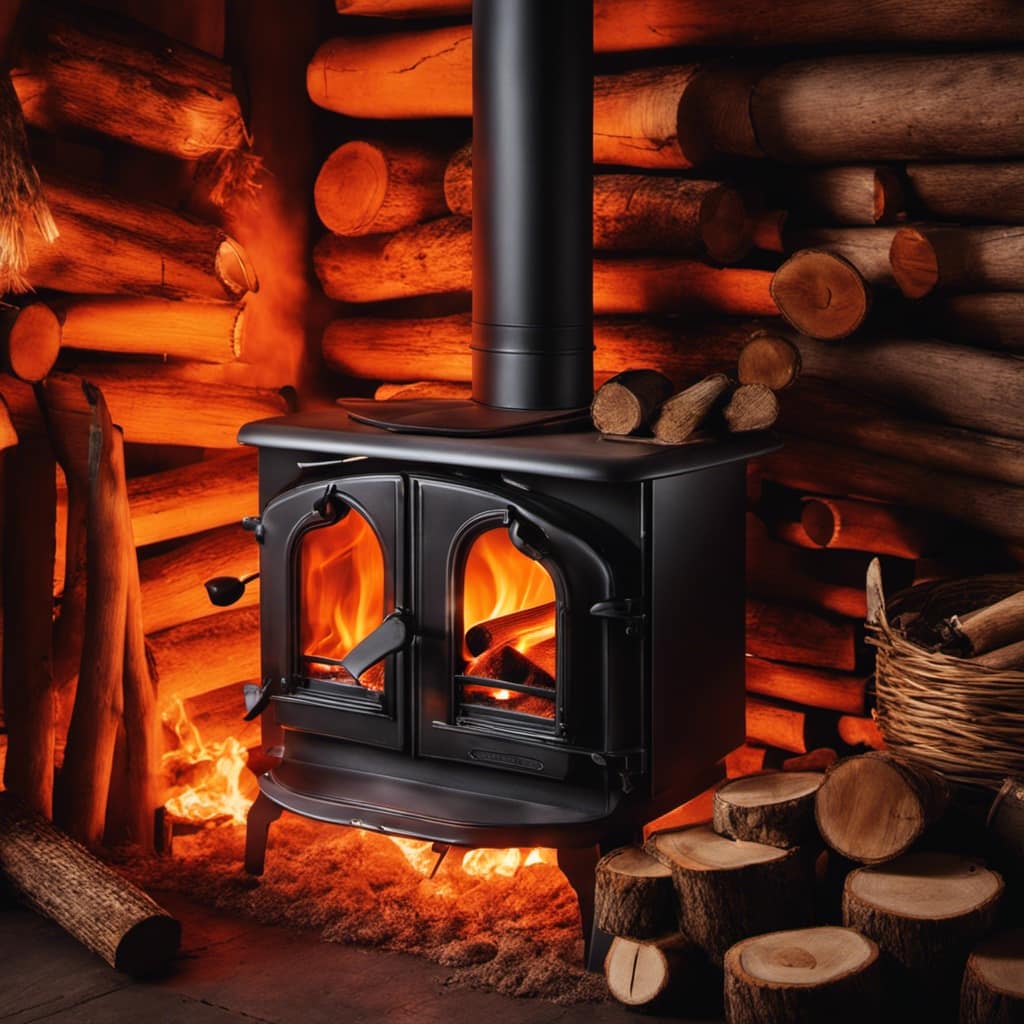
Additionally, a properly sized chimney or flue system is necessary to facilitate the expulsion of gases.
Frequently Asked Questions
How Long Does It Take for a Wood Stove to Reach Its Maximum Temperature?
It takes about 15-30 minutes for a wood stove to reach its maximum temperature. Properly starting a wood stove involves arranging kindling and logs in a specific way to ensure efficient combustion. Using a wood stove for heating offers benefits such as cost savings and a cozy ambiance.
Can I Use Any Type of Wood in a Wood Stove?
Yes, you can use different types of wood in a wood stove. Hardwoods like oak and maple burn longer and produce more heat, while softwoods like pine burn faster. It’s important to consider the pros and cons of each type for optimal performance.
How Often Should I Clean My Wood Stove to Maintain Optimal Heat Output?
To maintain optimal heat output, it’s crucial to clean your wood stove regularly. The frequency of wood stove cleaning depends on usage, but generally, it’s recommended to clean it thoroughly at least once a year.
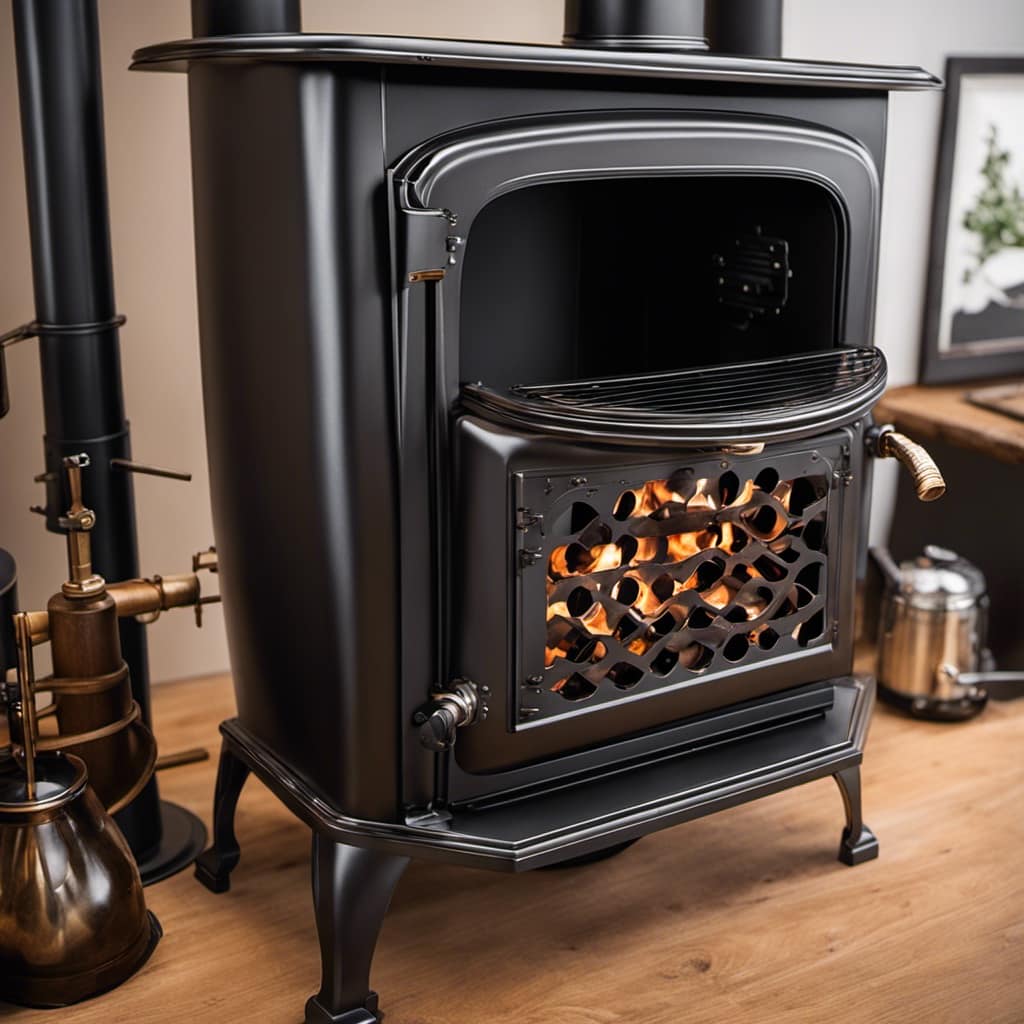
What Are Some Signs That My Wood Stove Is Operating at an Unsafe Temperature?
To ensure wood stove safety, it’s essential to be aware of signs that it’s operating at an unsafe temperature. Look out for excessive smoke, overheating surfaces, and unusual noises, as these may indicate the need for maintenance or adjustments.
Can I Use a Wood Stove in an Area With Limited Ventilation?
Using a wood stove in a poorly ventilated area can be dangerous due to the buildup of toxic gases like carbon monoxide. It’s crucial to ensure adequate ventilation to avoid these risks.
What Temperature Does a Wood Stove Need to Reach for Efficient Burning?
To achieve efficient burning in a wood stove, it’s crucial to reach the right temperature. Generally, a wood stove needs to reach a temperature of around 1100°F for efficient burning. To maintain this temperature, it’s important to know how to burn wood stove properly and use seasoned hardwood for fuel.
Conclusion
In conclusion, achieving the optimal temperature in a wood stove requires understanding the factors that affect heat output and combustion efficiency.
By selecting the right wood and maintaining proper ventilation, you can ensure a safe and enjoyable heating experience.
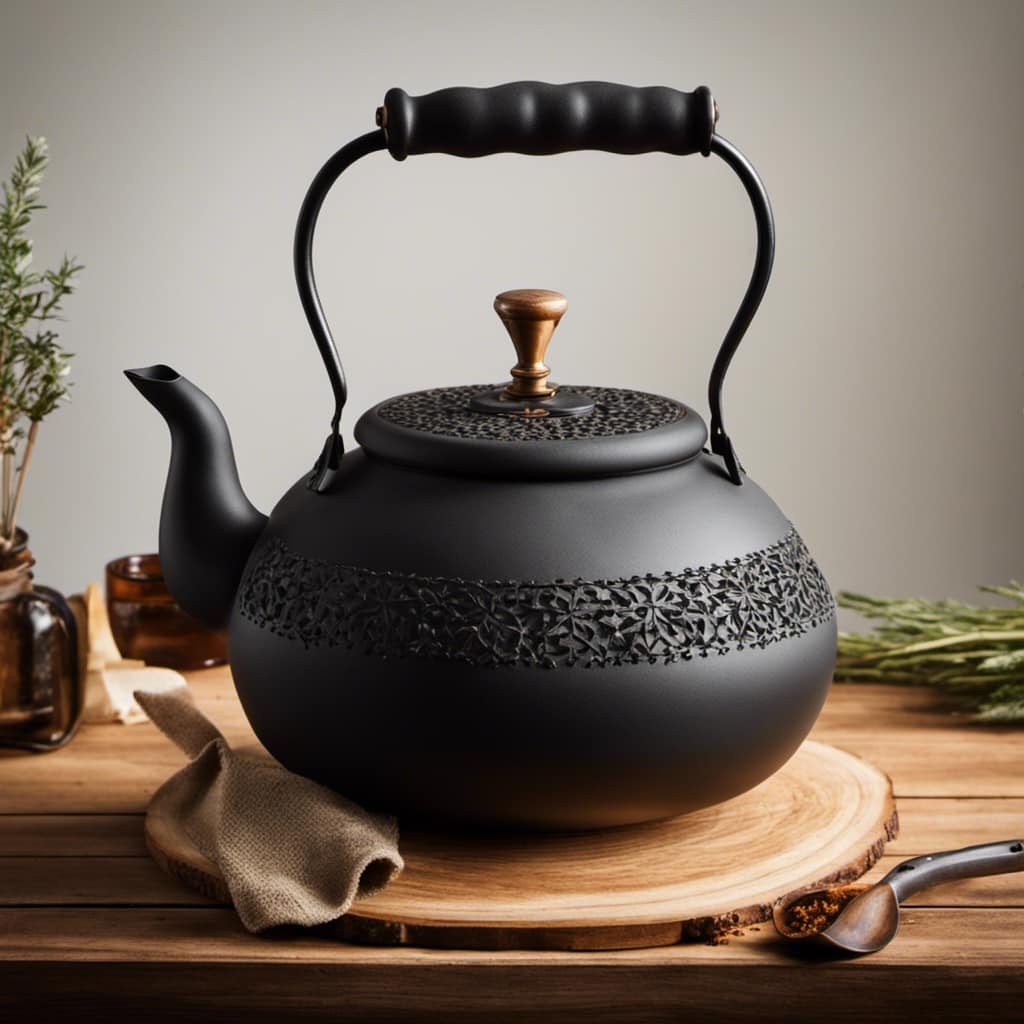
Remember, keeping the temperature within a safe range is crucial for both efficiency and safety.
So, embrace the warmth and cozy ambiance of a well-operated wood stove while keeping your home comfortable and secure.
Growing up surrounded by the vast beauty of nature, Sierra was always drawn to the call of the wild. While others sought the comfort of the familiar, she ventured out, embracing the unpredictable and finding stories in the heartbeat of nature.
At the epicenter of every remarkable venture lies a dynamic team—a fusion of diverse talents, visions, and passions. The essence of Best Small Wood Stoves is crafted and refined by such a trio: Sierra, Logan, and Terra. Their collective expertise has transformed the platform into a leading authority on small wood stoves, radiating warmth and knowledge in equal measure.





